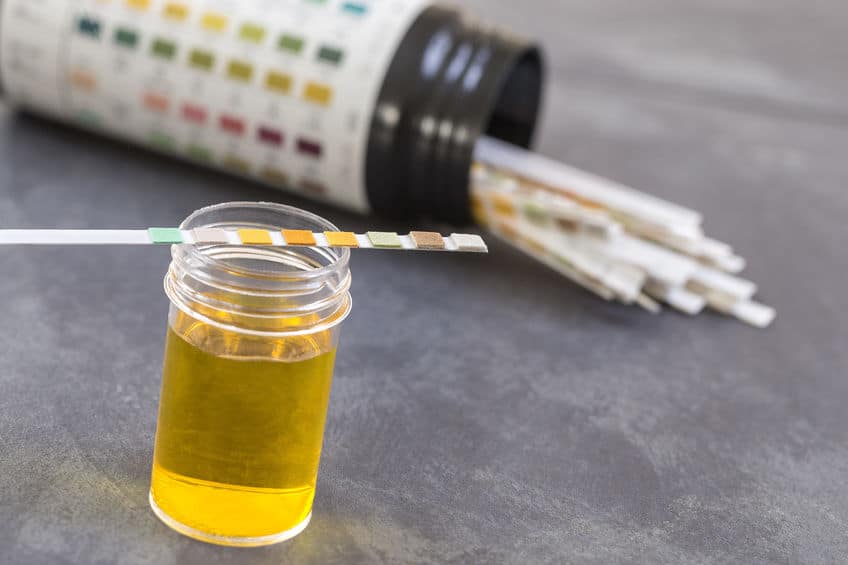pH refers to the acidity of a pool on a scale of 0 – 14. The pH in your salt water pool should be between 7.2 and 7.8. A pH within this range is considered ideal for proper water chemistry. At opposite ends of the spectrum, a pH of 0 indicates extreme acidity and 14 indicates extreme alkalinity.
You lower the pH in your salt water pool by using a product like pH Down to quickly bring the level down so that it’s within range. You raise the pH in your salt water pool by using a product like pH Up to quickly raise the level so that it’s within range. pH and alkalinity have a relationship and can move together. Thus total alkalinity affects and stabilizes pH levels and the higher the alkalinity, the harder it is to change pH. The ideal alkalinity level in a pool is 80 to 120 ppm (parts per million). When you change pH or alkalinity, both might be affected so it’s important to monitor each and keep both in check and within the proper range.
Relationship Between pH, Alkalinity And Chlorine
How important is pH and alkalinity to proper chlorine usage and effectiveness in your pool?
With a pH level of 6.0 your chlorine will be highly effective with 97% of your chlorine available to kill bacteria and algae. However, at 6.0 your pool water would be extremely acidic and unsafe to swim in. On the flip side, if you pH is at 8.5 only 9% of your chlorine will be available to kill bacteria and algae.
If pH is in the ideal range your chlorine will be about 50% effective.
Sunplay
So even when your pH level is at 7.5 which is in the ideal range, your chlorine is only 50% effective. But in order to be swimmable, the water needs to be within that range to avoid the negative affects of acidity on the one end and alkalinity on the other.
A high pH can lower your chlorine’s effectiveness, irritates skin, causes water cloudiness and limescale on the pool surface. A high pH can damage the pool liner, cause eye and skin irritation and makes hard water that can damage the pool.
pH
pH has a significant impact on the ability of free chlorine to sanitize pool water as shown above. When pH and other water chemistry is within range, chlorine is capable of quickly killing most contaminants in the pool within minutes at the most and seconds in the best case.
Alkalinity
Total alkalinity is important to the overall water chemistry and health of your salt water pool because it helps to ensure that pH remains in range. When alkalinity is too low, it can cause pH to fluctuate, and can cause damage to pool equipment particularly metal. When alkalinity is too high, the water can become cloudy, pH can become very difficult to adjust, and scale can start to build up on pool walls.

The above pH scale shows the 0 (acidic) to 14 (alkaline) scale and example of each level of acidity and alkalinity in our everyday life.
The important thing to understand about the pH scale is that it is a logarithmic one so that milk with a pH of 6 is actually 10x as acid as water which has a pH of 7. So on one end we have battery acid which is extremely acidic and on the other end we have drain cleaner which is extremely alkaline. And right in the middle at 7 we have water which is considered to be perfectly neutral ie. neither acidic or alkaline. A pH slightly higher than that between 7.2 and 7.8 is what is required to keep a pool sanitized.
How To Lower pH In A Saltwater Pool
You lower pH in your saltwater pool by using sodium bisulfate aka pH Down, pH Reducer or other commercial names. Sodium bisulfate reduces both pH levels and alkalinity so you need to keep that in mind when adding it to your pool.
Sodium bisulfate is best added to the pool by sprinkling it near each return jet in the water as it ensures the product gets quickly distributed throughout the pool. Follow product instructions to be sure.
How To Raise pH In A Saltwater Pool
You raise pH in your saltwater pool by using sodium carbonate aka baking soda.
As the chart above shows, baking soda has a pH of 8 which makes it a great way to raise pH in a pool that has a low level. In fact, many pH-raising products sold commercially use baking soda as a main ingredient to accomplish this. So while you need to use more than just a box of Arm & Hammer that you buy in your grocery store, you can buy baking soda in bulk to raise pH if you’d prefer to use a more natural option than a chemical-laced commercial one.
In general terms, you may need about 1.5 lbs of baking soda per 10,000 gallons of pool water to raise the pH by about 10 ppm. Check out my post on baking soda pool usage to learn more including some tips directly from Arm & Hammer.
Conclusion
- pH and alkalinity are related water chemistry features for any pool owner and it’s good to become familiar with both.
- Modern salt water pool chlorinators tend to help keep these two factors within range easier than a chlorine pool which involves adding more chemicals to the water which can throw measurements out of whack.
- Baking soda may be used to raise pH since as the chart above shows it’s more alkaline than water and in fact many pH Up-type products use baking soda as a main ingredient.
- Check out my page on salt water pool water chemistry to learn more about the whole range of water measurements and how they interrelate.

